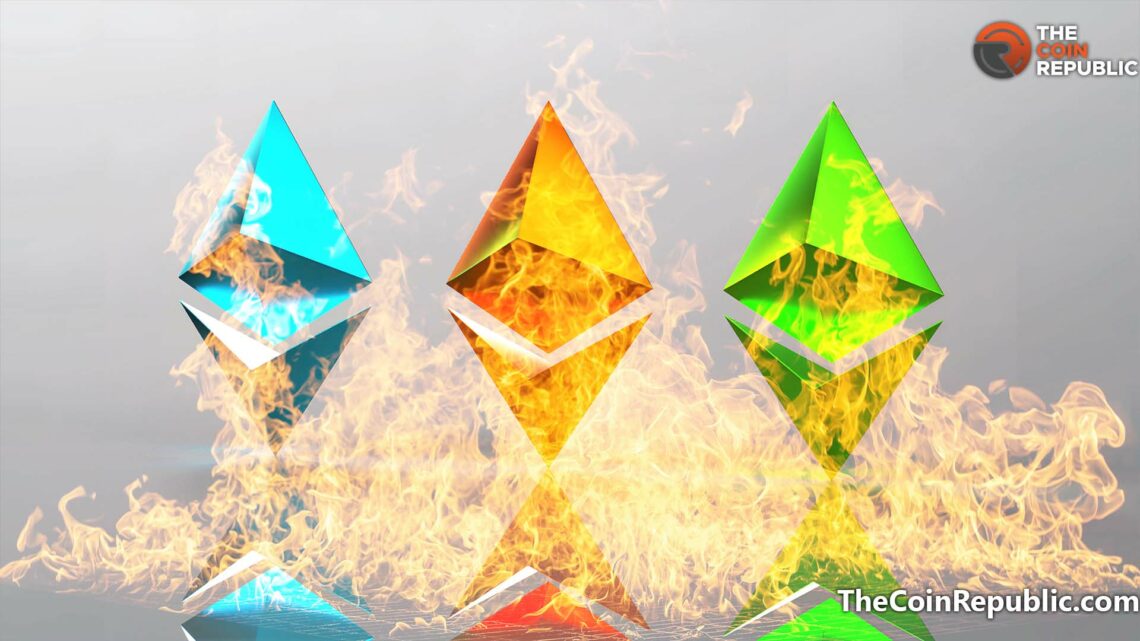Ethereum (ETH) is by far the most known and adopted cryptocurrency, apparently after Bitcoin (BTC). Given the capability of the first smart contract enabled blockchain and use cases of its native crypto asset ETH, the Ethereum ecosystem is the largest blockchain network within the crypto space. However the issues also grew up with the expansion of the network.
One such issue was the growing circulation supply of Ether (ETH). Countering the issue, the Ethereum network met with the Ethereum Improvement Protocol or EIP-1559 upgrade in August 2021. The upgrade was expected to change the fee market for ETH and it did so to a larger extent.
ETH Burn Implemented Given the Circulation Issue
After the implementation of the EIP-1559 upgrade, the burn mechanism burned thousands of ETH and took them out of circulation. The motive of the proposal was to make the crypto asset deflationaly and ETH burn continued to do the same as it achieved its goal with the further block formation.
Earlier than the upgrade, its contemporary issuance rate for the crypto asset was approx 603K ETH every year. This means that every year the amount of crypto assets getting included in the circulation supply was significant. The number of ETH being produced at the time were sufficient to bring the supply of crypto assets to exceptional heights.
However, the Ethereum burn proposal was implemented and the burning of ETH brought the situation under control. The proposal was expectedly burnt crypto assets by the rate of 835K ETH per year. Clearly this is relatively more than the rate of ETH being added within the circulation.
Given the burn mechanism, now the number of tokens being taken out the circulation is more than the number of tokens created out of block generation.
The Merge impact on Ethereum Burn
Moreover the pace of generation of new ETH went down following the Merge upgrade given the transition of the network from proof-of-work to proof-of-stakes. For instance, earlier with the PoW, the total number of ETH produced was more than four million. However, given the PoS, the number of token issuance is said to drop by over 60%.
Apparently, apart from other issues within the network related to transaction speed, increasing circulating supply also acted as an issue for the Ethereum network. The merge upgrade was to counter other issues and in addition it is also mitigating the token supply issue.
Earlier than the merge, the production rate of new tokens introduced within the ecosystem was around 3.66% every year. Post merge the rate of ETH issuance dropped to 0.07% per year. The number is comparatively lesser even than bitcoin whose issuance rate is approx 1.72%, as both BTC and ETH are subjected to being compared over many factors.

Andrew is a blockchain developer who developed his interest in cryptocurrencies while pursuing his post-graduation major in blockchain development. He is a keen observer of details and shares his passion for writing, along with coding. His backend knowledge about blockchain helps him give a unique perspective to his writing skills, and a reliable craft at explaining the concepts such as blockchain programming, languages and token minting. He also frequently shares technical details and performance indicators of ICOs and IDOs.


 Home
Home News
News










